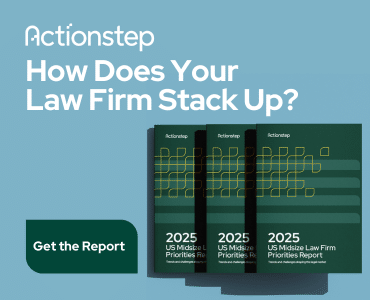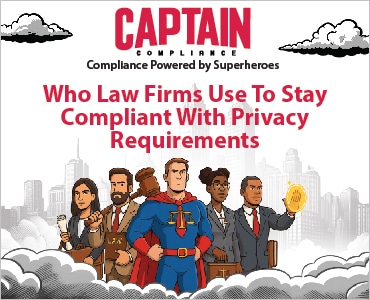The warning signs of a bad hire aren’t always dramatic, but the costs and drag on the firm’s momentum are real. By the time it becomes obvious, you’ve already lost time, money, and trust that’s hard to recover.
Hiring mistakes are expensive in any business, but in a small law firm, they create problems that show up fast and spread wide. One person’s lack of urgency, poor communication or resistance to feedback can slow case progress, frustrate staff and shake client confidence — sometimes within the first few weeks.

Table of contents
Costs That Affect More Than the Bottom Line
Hiring the wrong person can interrupt case flow, create internal friction, and drain time that should be spent moving the firm forward.
Time Lost to Oversight and Fixes
Every time a partner steps in to clarify instructions or clean up someone else’s work, they’re pulled away from higher-value tasks. Over a month, those interruptions add up.
Delays That Limit Revenue
When work slows down, so does billing. Even if the client pays eventually, the lag reduces how many matters the firm can take on. If a partner spends an extra hour per case making up for internal missteps, that’s time not spent developing new business or pushing active matters forward.
Strained Staff Dynamics
Strong employees tend to pick up the slack at first. But over time, that imbalance erodes morale. It’s not always visible right away. You may notice sharper tones, shorter responses or quiet withdrawal. In small teams, that tension builds fast, and it doesn’t take much to lose someone valuable.
Eroded Client Trust
Clients rarely know who’s at fault inside the firm. What they notice is whether updates arrive on time, whether answers make sense, and whether the process feels consistent. Even small breakdowns like missed callbacks or unclear billing can shift their perception of the firm’s competence.
Why Skills Alone Don’t Guarantee Fit
A strong resume doesn’t tell you how someone will operate in a small firm setting. Plenty of candidates have experience, but not all of them can manage deadlines without reminders, adapt to shifting priorities, or make sound decisions when no one’s looking over their shoulder.
Some hires come from environments with layers of supervision, detailed protocols and clearly defined roles. When those supports disappear, so does their effectiveness. Without initiative and follow-through, good credentials don’t help much.
Spencer Freeman, founder of Freeman Law Firm in Washington state, adds: “In a small firm, one person’s mindset can shift the entire culture — for better or worse. We look for people who take initiative, stay composed under pressure and communicate clearly with clients. That combination does more to protect the firm than any single credential.”
In small firms, the work moves fast and responsibilities overlap. If someone hesitates, waits for permission or shrinks from ownership, it affects everyone else’s ability to move cases forward.
What to Look for Before Making an Offer
Focus on How They Work — Not Just What They’ve Done
Resumes tell you what someone’s done. Interviews should help you understand how they operate under pressure, how they make decisions and how they adapt when things shift. The gap between experience and execution shows up quickly when the team is small and the pace is fast.
Skip the Scripted Questions and Dig into How They Solve Problems
Ask about specific moments when they had to adjust priorities, explain something to a client under stress or admit to a mistake. Their response will tell you more than a list of certifications ever could. The STAR method is a great way to uncover how they think through real situations, not just how they describe outcomes.
Watch for Cues in How They Communicate
Pay attention to whether their answers are clear and direct or padded and vague. A strong candidate won’t need to oversell their experience. They’ll speak in specifics, not generalities, and explain how they approached real situations rather than trying to sound perfect.
Gauge How They Handle Uncertainty
Small firms don’t always have detailed workflows or step-by-step training. Ask what they do when they’re not sure how to proceed. Candidates who stay calm, ask smart questions and keep things moving tend to outperform those who need constant guidance.
Hiring with Alignment in Mind
Start with How Your Firm Actually Operates
Before posting the job, define what success looks like inside your firm, not just what the role is called. Do you need someone who can handle constant client contact? Someone who works independently? Someone who’s comfortable wearing five hats by Thursday? Write that down before you look at a single resume.
Build Questions That Reflect Your Reality
If the role requires multitasking under pressure, your interview questions should reflect that. Skip the abstract hypotheticals. Instead, ask about situations that mirror what they’ll actually face, such as conflicting priorities, incomplete direction or a client who changes course mid-week.
Try questions like:
- How do you handle a situation where you’re working on three urgent tasks and a partner asks for something new mid-day?
- What do you do when a client sends unclear instructions but expects quick results?
- Tell me about a time you had to push back on someone internally to protect your own deadlines.
- What’s your process when you’re given minimal direction on a task you’ve never handled before?
Asking questions like this can reveal how candidates manage pressure, communicate across teams, and respond when the work isn’t neatly packaged.
Hire for Thinking, Not Image
Strong candidates may not always have the job title you’re expecting. What matters is how they work. Do they solve problems with clarity? Can they manage ambiguity? Do they move fast without cutting corners? Hire for how someone thinks through a situation — not how polished their history looks on paper.
How to Respond When the Hire Isn’t Working Out
Create a Short Window to Evaluate
If a new hire is falling behind, creating confusion or requiring more oversight than expected, don’t wait to see if it smooths out. Set a short timeframe — usually 30 days — with clear expectations for improvement. Keep the focus on performance, not potential. The goal isn’t to fix them, it’s to determine whether they can meet the role’s actual demands.
Act Decisively if Things Don’t Improve
Ongoing mistakes, missed deadlines or signs of poor judgment rarely work themselves out. Once the same issues repeat, the longer you wait, the more disruption spreads to the rest of the team. Letting someone go quickly protects the people who are performing and preserves the quality of work.
Every Hiring Decision Shapes the Firm and Reaches the Client
Hiring someone is a business decision; so is letting them stay. Small firms don’t need perfect hires. They need aligned ones, people who carry their weight, move fast and make things easier for everyone around them. When the right people are in the right roles, the entire firm feels it, and so do your clients.
Licensed under the Unsplash+ License















